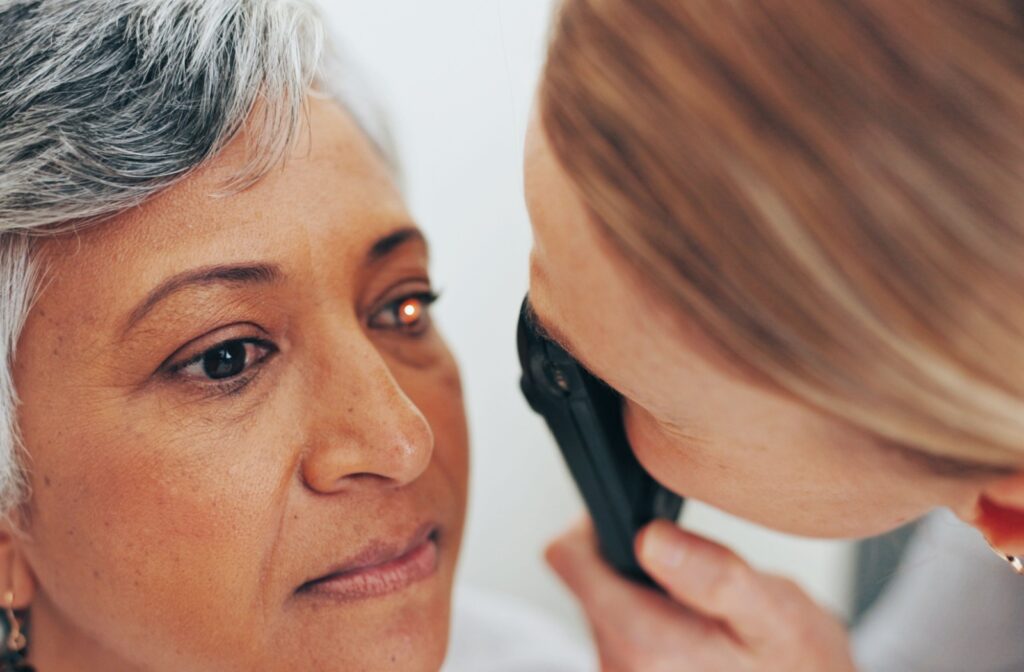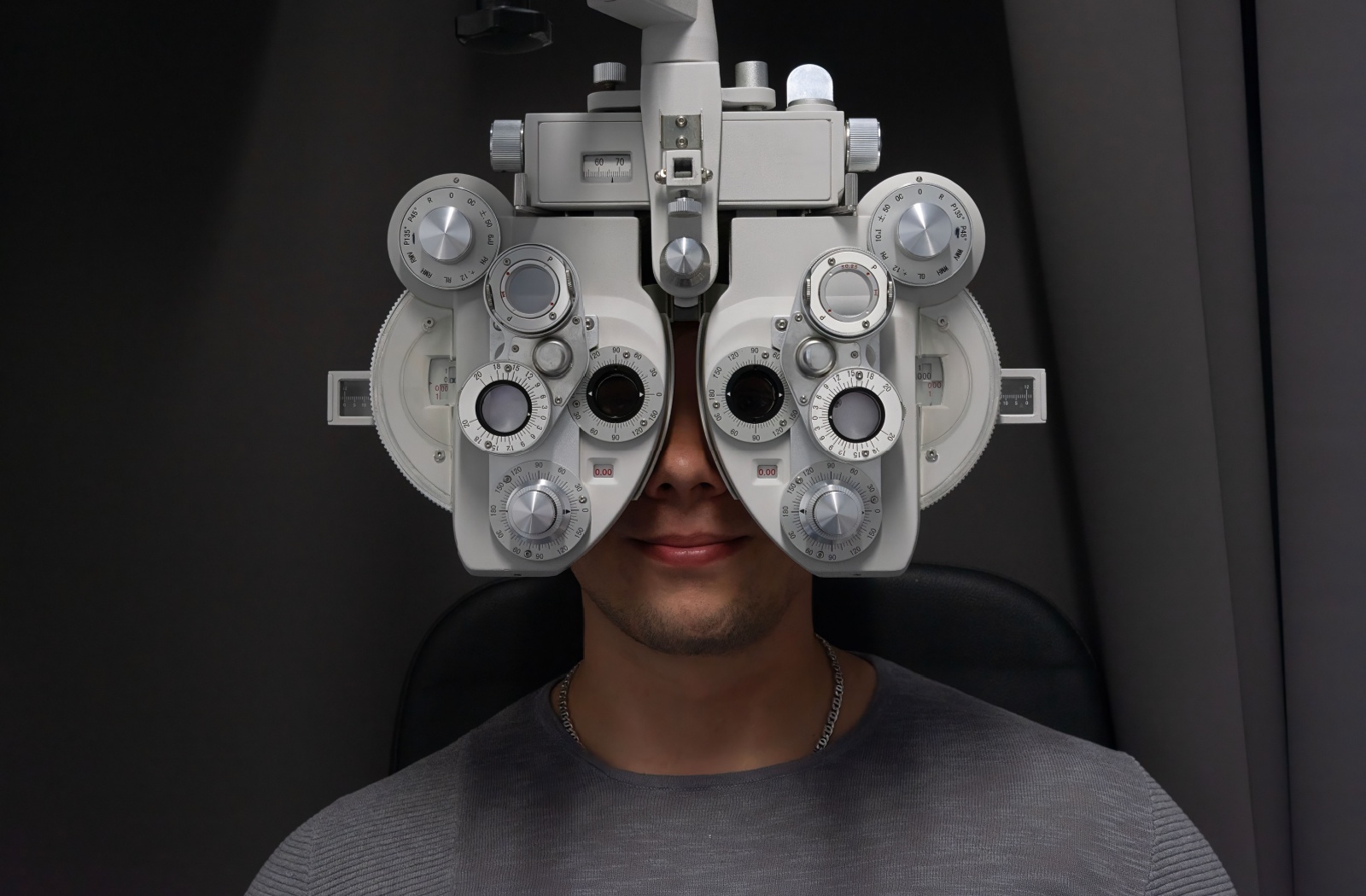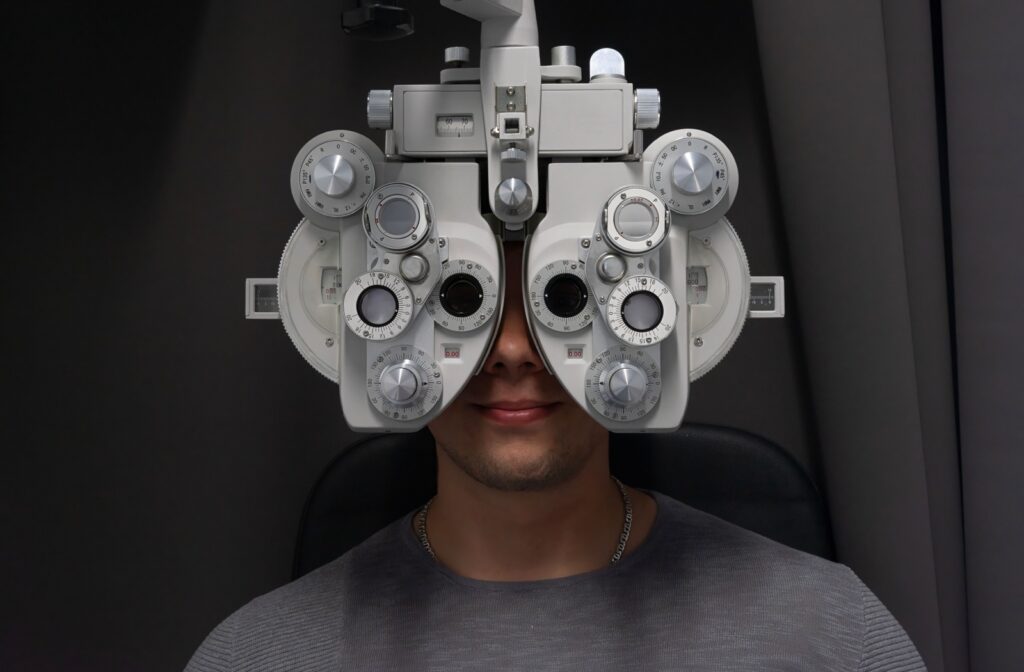When you sit in the exam chair, you probably expect the classic question—”Which looks clearer, 1 or 2?” This familiar part of an eye exam is more than just a routine check. It’s called a refraction test, and it lets us help you see the world clearly.
A refraction test helps us determine the prescription you need for eyeglasses or contact lenses. While a full eye exam assesses the health of your eyes, the refraction test focuses entirely on determining the lens power that can give you the sharpest vision.
The Difference Between An Eye Exam & A Refraction Test
Think of a comprehensive eye exam as a complete health checkup for your eyes. We look at everything from your eye pressure to the condition of your retina. This lets us monitor for eye conditions and helps you keep your eyes healthy for years to come.
A refraction test is one important piece of that larger puzzle. Its purpose is to measure your refractive error, or how your eye focuses light. This test is what provides the numbers for your eyeglass or contact lens prescription.
What To Expect During Your Refraction Test
The Phoropter & The Eye Chart
You’ll look through a device called a phoropter, which looks like a large mask and contains a number of different lenses. As you focus on an eye chart across the room, we’ll flip between lens options. Your answers to the classic question, “Which looks clearer, 1 or 2?” help us carefully narrow down your prescription.
Other Tools An Eye Doctor May Use
An optometrist may also use a handheld instrument called a retinoscope to shine a small light into your eye. This gives us a great starting point for your prescription before we refine it with the phoropter. Sometimes, a computerized instrument provides this initial measurement automatically.

How Long Does A Refraction Test Take?
The refraction is a quick part of your overall eye exam, which usually takes about 30 to 40 minutes. The refraction itself typically takes just a few minutes to complete. We value your time and work to make the process as smooth as possible.
The Purpose Of A Refraction Test & Common Results
The main goal of a refraction test is to see if you have what’s known as a refractive error. This happens when the shape of your eye prevents light from focusing correctly on the retina, which can make your vision blurry. The test tells us the exact correction you need to get your vision back in focus.
Common Refractive Errors
Refractive errors are very common and can be corrected with glasses or contacts. The four main types are:
- Myopia: Also called nearsightedness, this makes it hard to see distant objects clearly.
- Hyperopia: Known as farsightedness, this can make it difficult to focus on objects up close.
- Astigmatism: This condition can make objects look blurry or distorted at all distances.
- Presbyopia: This is age-related farsightedness that makes it harder to read or see things close up as you get older.
What Your Results Mean
Normal vision is often described as 20/20. This means you can see a specific size of letter on an eye chart from 20 feet away without help. If your vision is 20/20, you likely don’t have a significant refractive error.
If the test shows you do have a refractive error, this simply means that you can benefit from glasses or contact lenses.
Questions About Insurance & Payment
We recommend you review your vision plan coverage before your visit. Many medical insurance plans, including some Medicare plans, cover the health portion of an eye exam. However, the refraction test may be considered a separate service since it’s used to determine your prescription for glasses.
How Often You Should Get Your Eyes Checked
Regular eye exams are a key part of your overall health care routine. How often you need an exam depends on several factors. These include your age, your current health, and whether you already wear corrective lenses.
For Adults With Corrected Vision
If you already wear glasses or contact lenses, we suggest scheduling an eye exam every one to two years. It’s also important to book an appointment anytime you notice a change in your vision. An updated refraction can make sure your prescription is still right for you.
For Adults Over 40
As you get older, changes in your eyes become more common. We often recommend yearly eye exams for adults over the age of 40. People with certain health conditions, such as diabetes and its effects on vision, should also schedule an exam annually or as suggested by their health care provider.
Keep Your Vision Clear
Understanding the parts of your eye exam can help you feel more comfortable and informed about your vision health. At Envision Eye Care, we’re here to answer your questions and provide a clear path to better sight. Schedule your next eye exam with us today.



